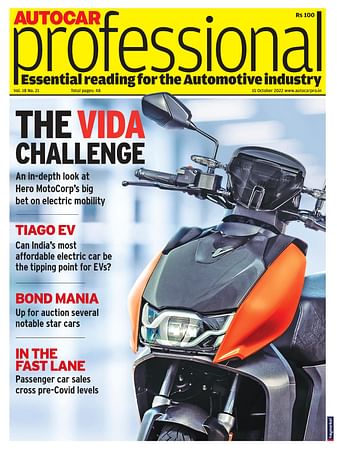Hyundai Motor showcases smart mobility ecosystem vision
The 1:8-scale model on display is a miniature of the exhibit shown at CES 2020 and includes integration of its Urban Air Mobility (UAM), Purpose Built Vehicles (PBV) and Hub (Mobility Transit Base) smart mobility solutions as part of a dynamic human-centered future cityscape.
Korean carmaker major, Hyundai Motor Company is showing its smart mobility ecosystem model in the lobby of its headquarters until June 12 and at other key global events afterward in order to further communicate its future mobility vision.
The 1:8-scale model on display is a miniature of the exhibit shown at CES 2020 and includes integration of its Urban Air Mobility (UAM), Purpose Built Vehicles (PBV) and Hub (Mobility Transit Base) smart mobility solutions as part of a dynamic human-centered future cityscape.
Hyundai Motor says the exhibition aims to inspire its employees and other audiences by showing the company’s vision for future mobility as it aims to become a Smart Mobility Solution Provider. After the current exhibition ends on June 12, the model will be showcased at major events around the globe.
Jaiwon Shin, executive VP and Head of Hyundai’s Urban Air Mobility Division said: “Hyundai’s UAM Division is leading necessary technological developments and working towards realising the introduction of Urban Air Mobility, which has been people’s dream for decades. S-A1 Personal Air Vehicle concept on display shows our dedication to bring forth Urban Air Mobility for the benefit of humanity.”
The miniature model demonstrates Hyundai’s vision of a future mobility ecosystem in urban use. The UAM is shown with its rotors tilting, enabling vertical take-off and landing and rotating horizontally for flight.
On the ground, PBVs can be seen running on the road, traveling around the Hub, becoming part of the building when connecting to the Hub’s docking station. The Hub is not only a space that connects UAM and PBVs, but also serves as a new concept for connecting people, which Hyundai says reflects its determination to give people more quality time while providing seamless freedom of movement and the opportunity to enjoy diverse experiences. In addition, mirrors are installed on the ceiling of the exhibition space to allow an immersive viewing experience from various angles. Videos of a future city transformed through smart mobility solutions will also be shown onlarge displays installed on adjacent walls.
Euisun Chung, executive vice-chairman, Hyundai Motor Group during CES earlier this year said: “For our smart mobility solutions, we considered what truly matters in cities and in people’s lives. UAM, PBV and Hub will revitalise cities by removing urban boundaries, giving people time to pursue their goals, and creating a diverse community. Our goal is to help build dynamic human-centered future cities and continue our legacy of progress for humanity. CES 2020 is just the start and we will continue to realise this vision.”
To realise its vision for smart mobility solution, Hyundai added to its design organisation a dedicated team for UAM design and enhanced collaboration between UAM Division, Design Center, and Strategy and Technology Division.
RELATED ARTICLES
Sept 2024 From R&D incentives to EV infrastructure: What auto components industry expects from Budget 2024
Sept 2024 From R&D incentives to EV infrastructure: What auto components industry expects from Budget 2024
US car majors hit the brakes on driverless cars
Ford Motor and Volkswagen to close self-driving startup Argo AI, due to lack of technology and clear regulations.
Autoliv and Geely to develop advanced safety tech for future vehicles
Scope of cooperation includes safety for high-level autonomous driving, intelligent steering wheel technology, a 360deg ...






 By Autocar Pro News Desk
By Autocar Pro News Desk
 18 May 2020
18 May 2020
 7823 Views
7823 Views














